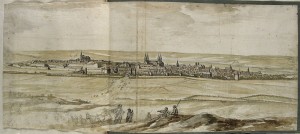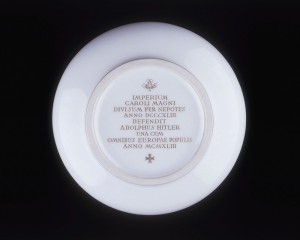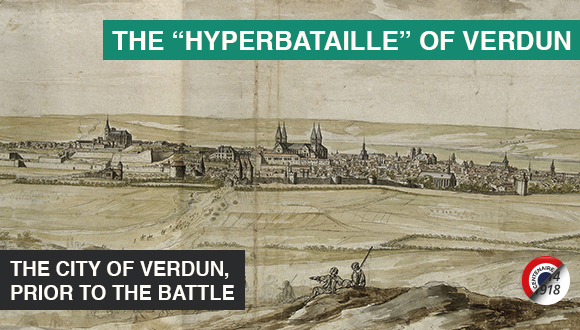 The city of Verdun made history with the Treaty of Verdun signed in AD 843, the first treaty that divided the Carolingian Empire into three kingdoms. Although this historical event received only a passing mention in French history textbooks at the beginning of the twentieth century, in Germany it was looked upon as the foundation stone of the Holy Roman Empire also referred to as the First Reich.
The city of Verdun made history with the Treaty of Verdun signed in AD 843, the first treaty that divided the Carolingian Empire into three kingdoms. Although this historical event received only a passing mention in French history textbooks at the beginning of the twentieth century, in Germany it was looked upon as the foundation stone of the Holy Roman Empire also referred to as the First Reich.
During the Middle-Ages the three Bishoprics of Verdun, Metz and Toul passed under the suzerainty of the Holy Roman Empire. In 1553, Henry II of France seized the city. Following the Peace of Westphalia, it was ceded to France in 1648.
 After France’s defeat in the Franco-Prussian War of 1870-71, the newly created German Empire annexed most of Alsace and the Moselle department of Lorraine. The proximity of the new border and the recently annexed Citadel of Metz contributed to make Verdun – where the French had acquitted themselves honourably during the siege – a major strategic point within the defensive barrier constructed by Séré de Rivières to protect France against its powerful German neighbour.
After France’s defeat in the Franco-Prussian War of 1870-71, the newly created German Empire annexed most of Alsace and the Moselle department of Lorraine. The proximity of the new border and the recently annexed Citadel of Metz contributed to make Verdun – where the French had acquitted themselves honourably during the siege – a major strategic point within the defensive barrier constructed by Séré de Rivières to protect France against its powerful German neighbour.
 A ring of nineteen forts was built and fourteen kilometres of galleries dug under the fortress known as the Citadel of Verdun. In the context of the war of movement unleashed during the summer of 1914, French Military High Command ordered without moral compunction the evacuation of forces of the fortifications despite their strategic importance in September 1914. Indeed, it was the Battle of Verdun that was to make the city the Symbol of the Great War.
A ring of nineteen forts was built and fourteen kilometres of galleries dug under the fortress known as the Citadel of Verdun. In the context of the war of movement unleashed during the summer of 1914, French Military High Command ordered without moral compunction the evacuation of forces of the fortifications despite their strategic importance in September 1914. Indeed, it was the Battle of Verdun that was to make the city the Symbol of the Great War.


Ajouter un commentaire